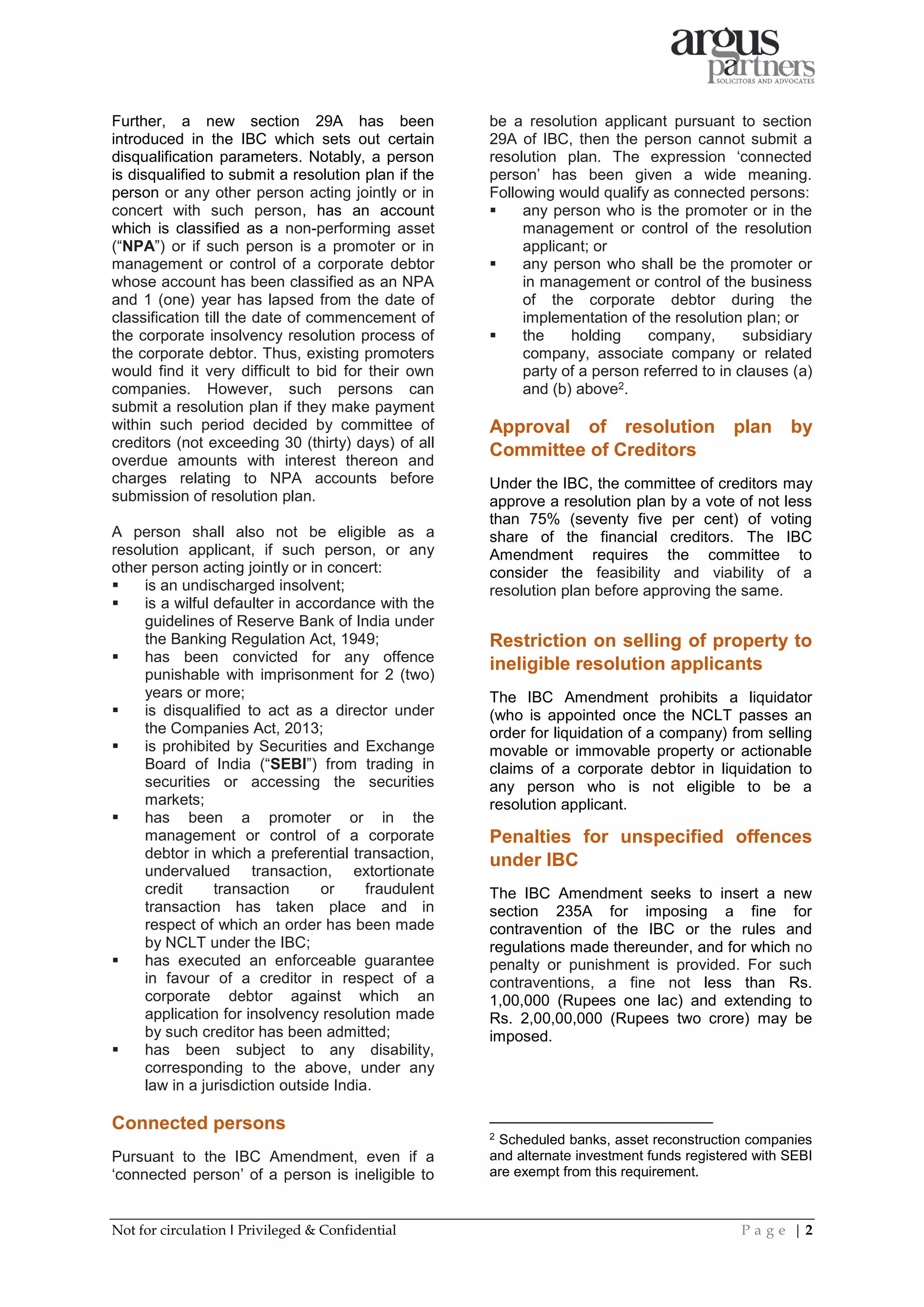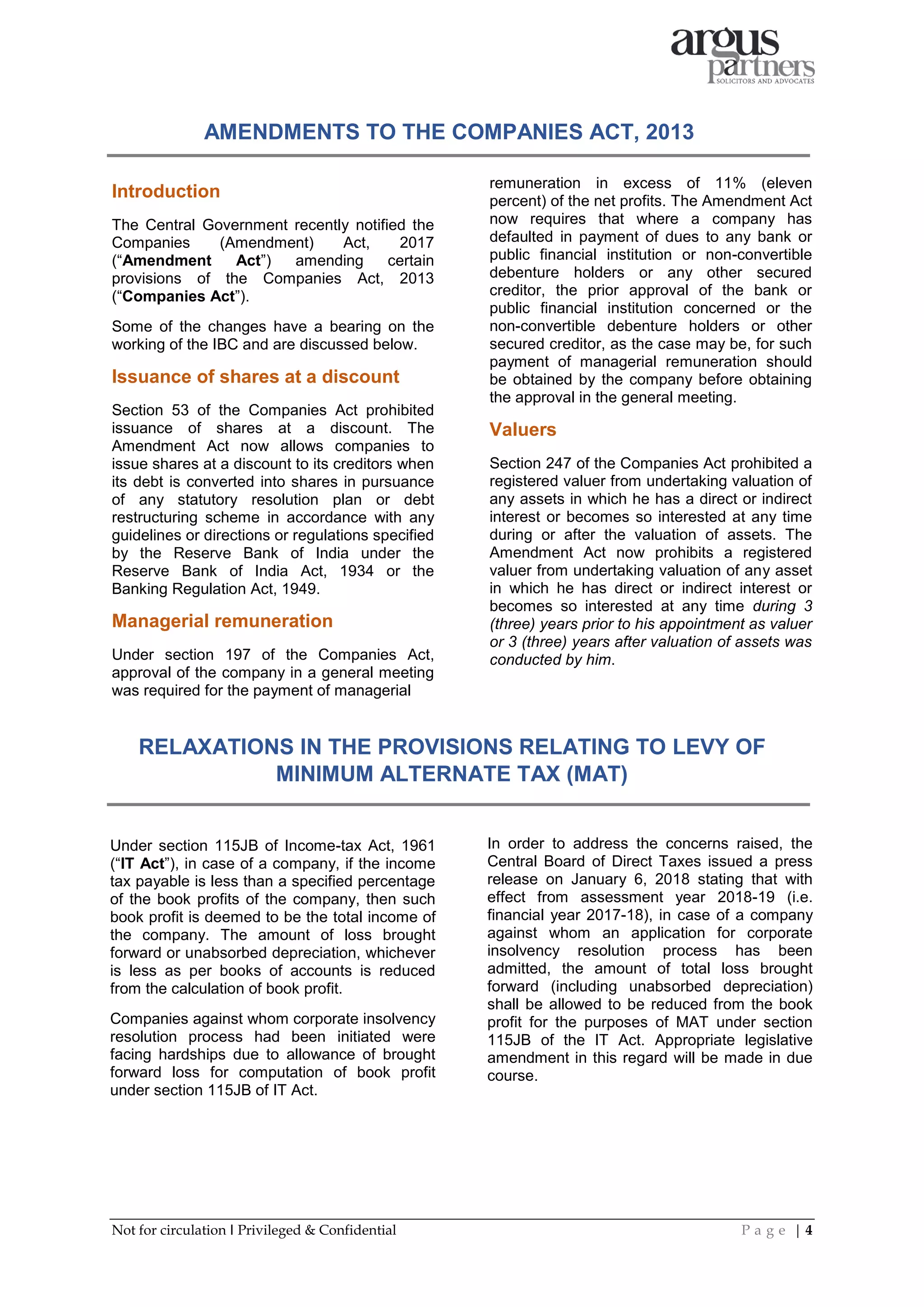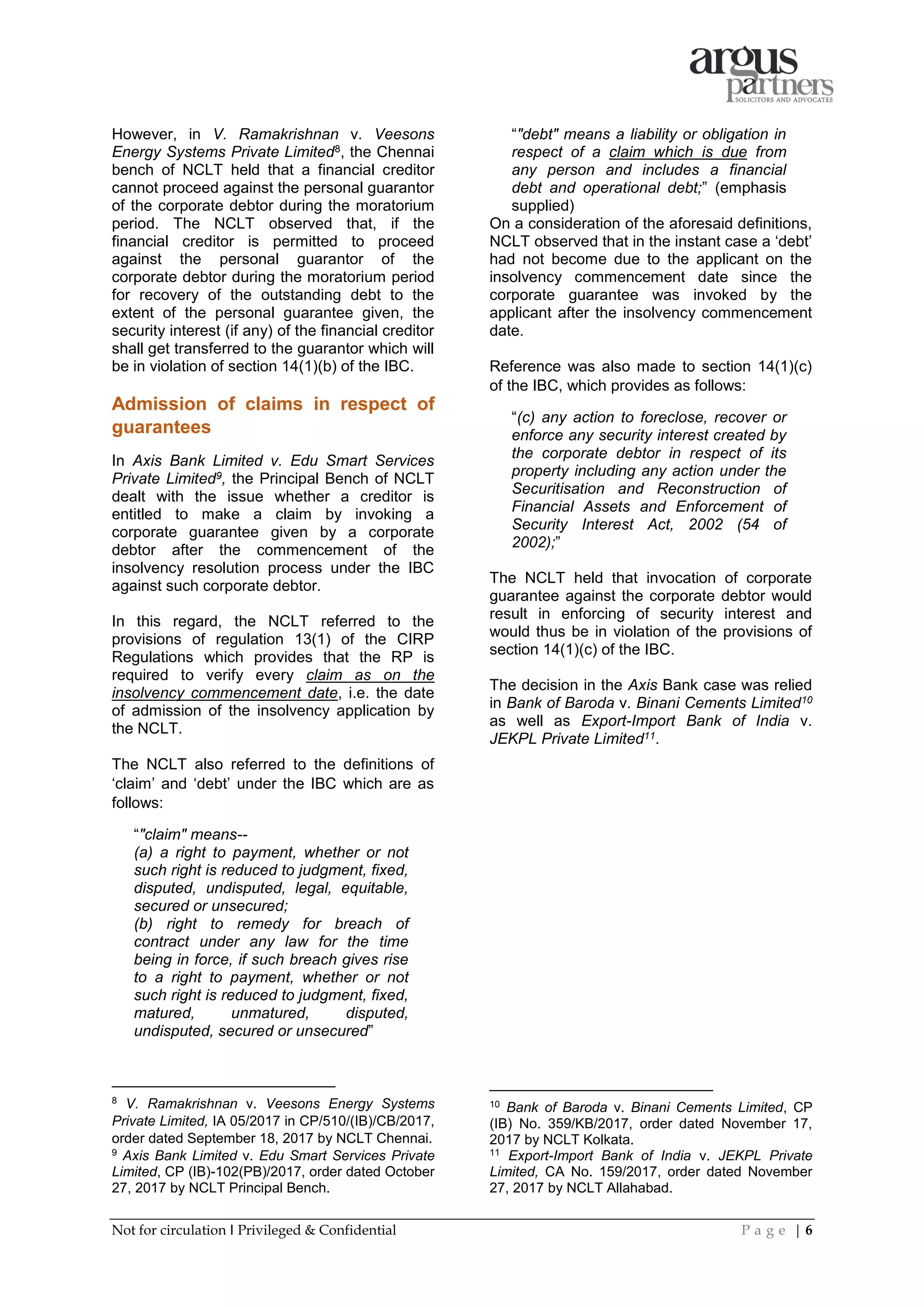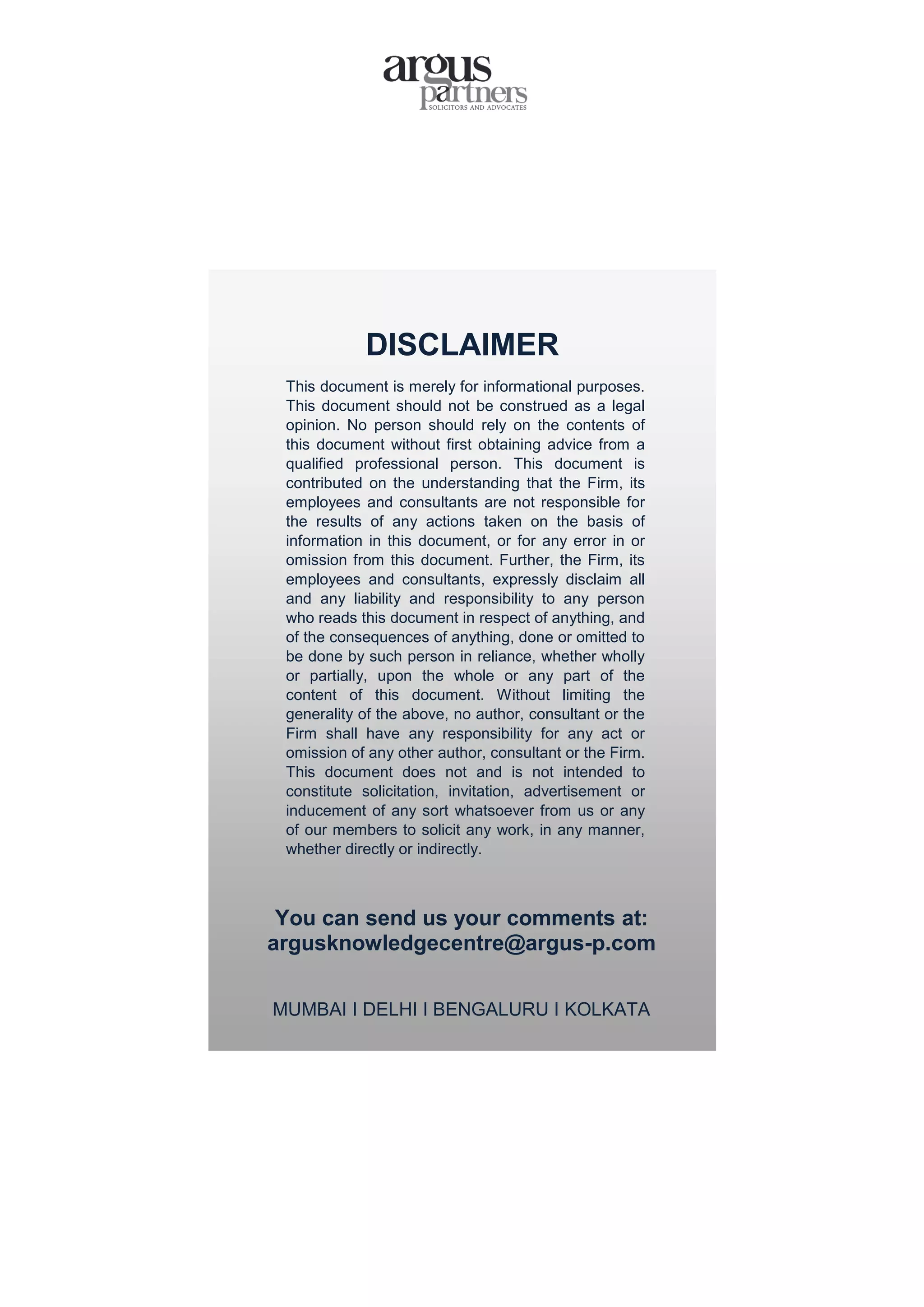The document discusses recent changes to India's Insolvency and Bankruptcy Code (IBC) regime through amendments introduced by an Ordinance and subsequent Act. Key changes include:
1) Stricter eligibility criteria for resolution applicants, including disqualifying wilful defaulters, fraudulent entities, and those associated with non-performing assets.
2) Connected persons of ineligible resolution applicants are also barred from submitting resolution plans.
3) The committee of creditors must consider a resolution plan's feasibility and viability before approving it.
4) Liquidators are prohibited from selling bankrupt companies' assets to ineligible resolution applicants.




![Not for circulation I Privileged & Confidential P a g e | 5
Moratorium for guarantors
In Sicom Investments and Finance Limited v.
Rajesh Kumar Drolia3, one of the issues which
came up for consideration before the Bombay
High Court was whether by virtue of the fact
that an order of moratorium had been passed
under section 14 of the IBC in respect of the
principal borrower, the suit against the
guarantors could not be proceeded with.
For ease of reference, the relevant extract of
section 14 of the IBC is reproduced
hereinbelow:
“Subject to provisions of sub-sections
(2) and (3), on the insolvency
commencement date, the Adjudicating
Authority shall by order declare
moratorium for prohibiting all of the
following, namely –
(a) the institution of suits or continuation
of pending suits or proceedings against
the corporate debtor including
execution of any judgment, decree or
order in any court of law, tribunal,
arbitration panel or other authority;
(b) transferring, encumbering,
alienating or disposing of by the
corporate debtor any of its assets or
any legal right or beneficial interest
therein;
[…]” (emphasis supplied)
The Bombay High Court observed that from a
plain reading of section 14 it is clear that the
moratorium under the section applies only to
the ‘corporate debtor’. It was held that the
prohibition on institution/ continuation of suits
is applicable only to the corporate debtor
which is in insolvency and not any third party
such as a guarantor, be it an individual or a
corporate guarantor.
In this case, the Bombay High Court also
considered the decision of the Allahabad High
Court in Sanjeev Shriya v. State Bank of
3
Sicom Investments and Finance Limited v. Rajesh
Kumar Drolia and Ors., Summons for Judgment No.
221 of 2010 in Commercial Suit No. 44 of 2010,
order dated November 28, 2017 by the Bombay
High Court.
India4, where the Allahabad High Court held
that once an order of moratorium is passed
under section 14 of the IBC, the proceedings
against the guarantors have to be stayed. The
Allahabad High Court was of the view that
proceedings against the guarantors cannot be
continued unless the liability of the principal
debtor as well as that of the guarantors is
determined and crystalised.
The Bombay High Court disagreed with the
view taken by the Allahabad High Court in the
Sanjeev Shriya case and observed that the
aforesaid decision does not give any
reasoning as to how the order passed under
section 14 in favour of the corporate debtor
would automatically be beneficial to the
guarantor without any insolvency resolution
process being initiated by or against the
guarantor.
In this regard, it may be noted that conflicting
views have been taken on this issue by
various benches of the NCLT. In Schweitzer
Systemtek v. Phoenix ARC Limited5 and Alpha
& Omega Diagnostics (India) Limited v. Asset
Reconstruction of India & Ors.6, the Mumbai
bench of NCLT held that the personal
properties of the promoters of the corporate
debtor, which have been provided as security
to the lenders, will not be subject to the
moratorium. On appeal to the NCLAT7, it
dismissed the appeal as it took the view that
the order of the NCLT was in accordance with
law.
4
Sanjeev Shriya v. State Bank of India, Writ C. No.
30285 of 2017, order dated September 6, 2017 by
the Allahabad High Court.
5
Schweitzer Systemtek v. Phoenix ARC Limited,
T.C.P. No. 1059/I&BP/NCLT/MB/MAH/2017, order
dated July 3, 2017 by NCLT, Mumbai.
6
Alpha & Omega Diagnostics (India) Limited v.
Asset Reconstruction of India & Ors., T.C.P. No.
1117/I&BP/NCLT/MB/MAH/2017, order dated July
10, 2017 by NCLT, Mumbai.
7
Schweitzer Systemtek v. Phoenix ARC Limited,
Company Appeal (AT) (Insolvency) No. 129 of
2017, order dated August 8, 2017 by the NCLAT.
Alpha & Omega Diagnostics (India) Limited v. Asset
Reconstruction Company of India Limited & Ors.,
Company Appeal (AT) (Insol) No. 116 of 2017,
order dated July 31, 2017 by the NCLAT.
RECENT DECISIONS ON GUARANTEES](https://image.slidesharecdn.com/recentdevelopmentsintheibcregime-arguspartners-180124132432/75/Recent-Developments-In-The-IBC-Regime-5-2048.jpg)

